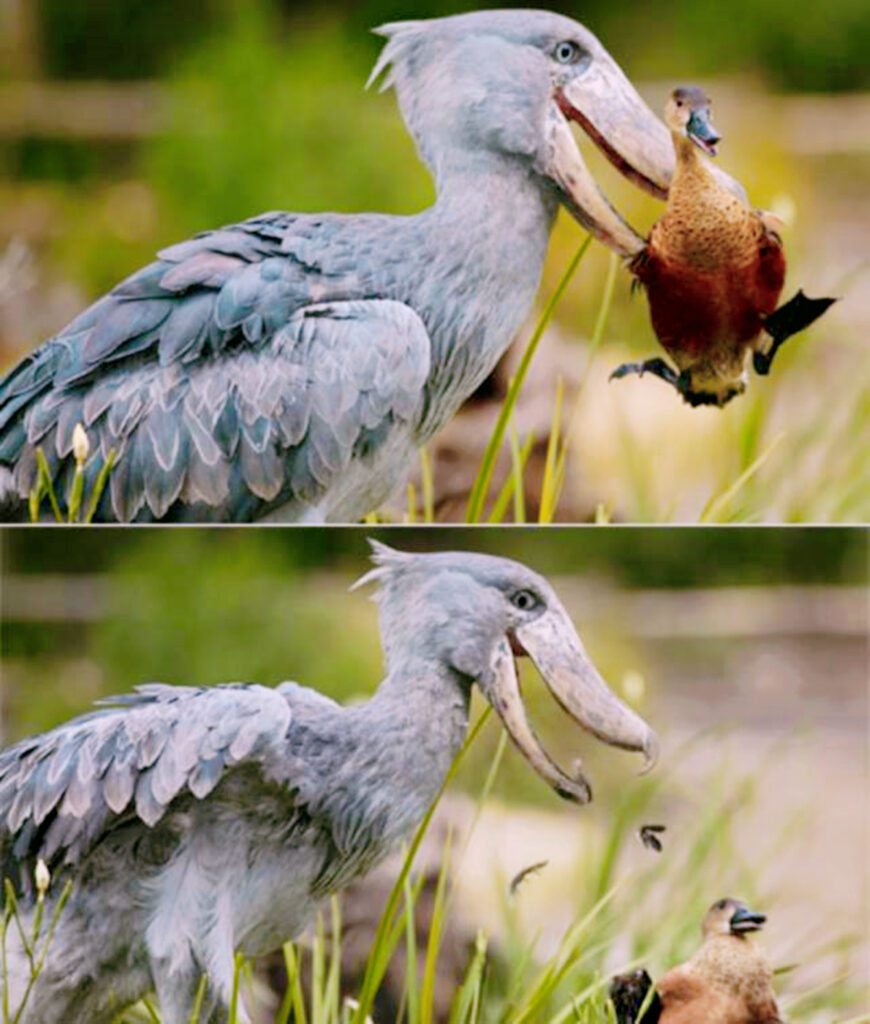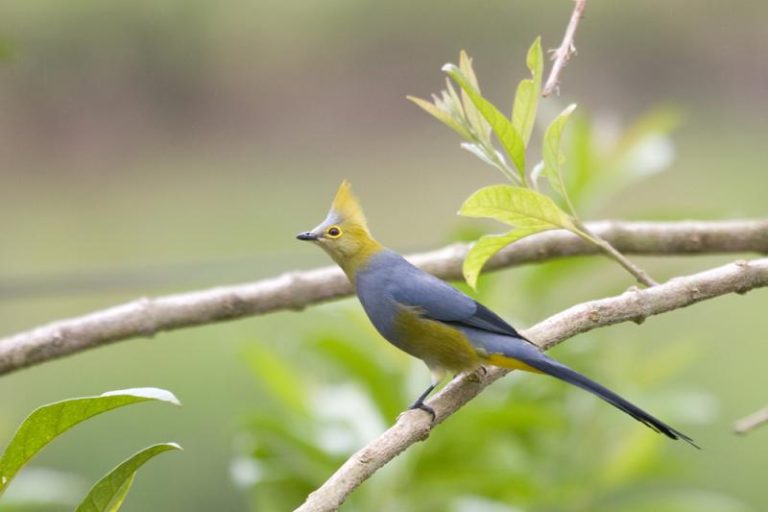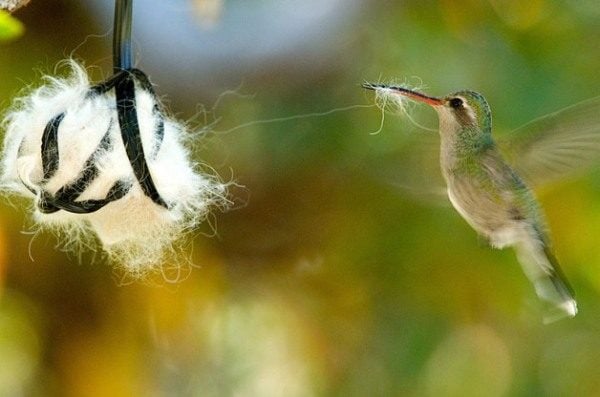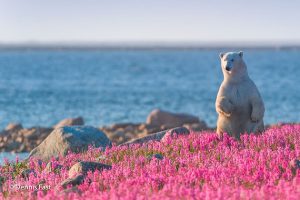
In the vast and enigmatic South American wilderness, where unmatched biological diversity exists, the jaguarundi lurks as a mesmerizing feline marvel. With a sleek, elongated body, short legs, and a rounded head, this medium-sized wild cat, which can weigh up to 9 kg, attracts attention with its unusual appearance. Its typical length is between 50 and 75 centimeters. With a coat of glossy reddish-brown fur that is sporadically speckled or striped, the jaguarundi has a unique beauty that is reminiscent of otter and small wildcats. The jaguarundi is a mammal that has huge round ears that prickle and a long tail that is proportionate to its body. Its quickness and grace are unmatched in its lush habitat.
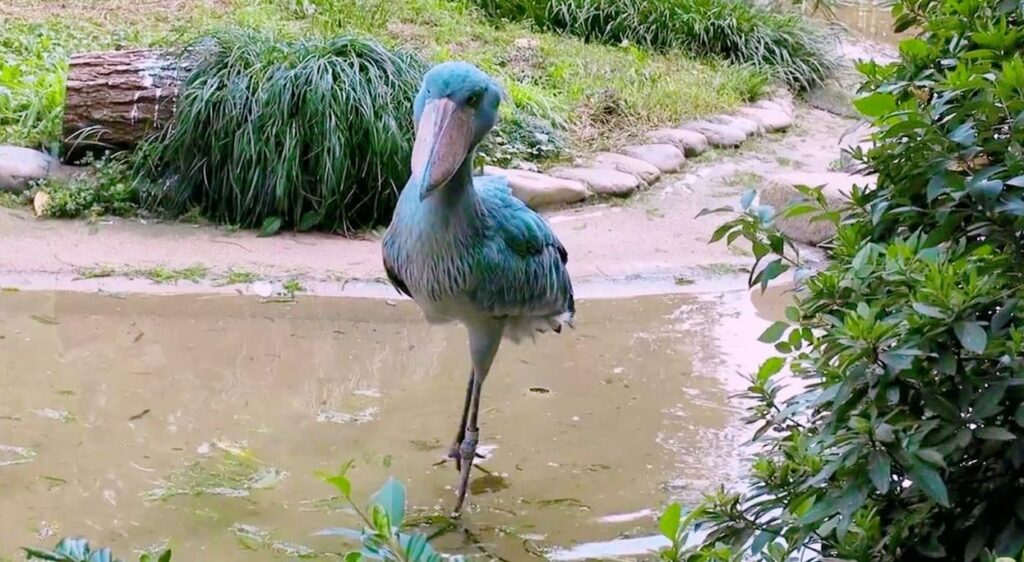
With its massive head and characteristic boot-shaped beak, the whale-headed stork exudes grandeur and has been dubbed “the largest living bird in the world” because of its excessively huge skull. With owl-like eyes poised atop its expressive face, its presence is both arresting and alluring. At just 12 centimeters across, its beak holds the record for being the broadest in the world. Its exceptional sharpness makes it an effective hunting tool.
A fearsome hunter, the whale-headed stork has an adorable appearance. Its razor-sharp beak easily pierces through crocodiles’ strong hides, leaving its victim helpless once it has it in its grasp. This adaptable bird is particularly praised for its varied food, which includes lungfish and turtles, demonstrating its strength and flexibility in the wild.

The red-spotted tortoise has gained popularity over time, frequently being compared to “tigers” and “puppies” due to its elegant appearance and endearing personality. However, the threat it faces is a result of human intervention rather than one of its inherent qualities. Its population has significantly decreased as a result of the rapid degradation of its natural habitats and the spread of environmental toxins. As of right now, just about 2,500–4,000 of its once abundant population are thought to be living in their natural habitats, which is why they are considered vulnerable. In reaction to this dire situation, cooperative efforts have been launched to protect and maintain this rare reptile, including the implementation of wildlife protection laws in a number of locations.

Understanding the whale-headed stork’s ecological significance is essential to realizing how urgently its preservation is needed. Nestled into the complex web of Africa’s diverse ecosystems, this species is essential to maintaining environmental balance. Because of its exceptional hunting skills—most notably, its ability to pursue large animals like crocodiles—the stork plays a significant role in controlling various populations, which in turn affects the dynamics of ecosystems.

The whale-headed stork’s endangered status is a powerful reminder of the extensive effects that human activity has on the fragile balance of nature. Urbanization, agriculture, and industrialization cause habitat damage that disturbs these magnificent birds’ natural habitats and brings them dangerously close to extinction. Pollution exacerbates the problems even more, impacting not only the stork directly but also the fragile ecosystem’s web of life.
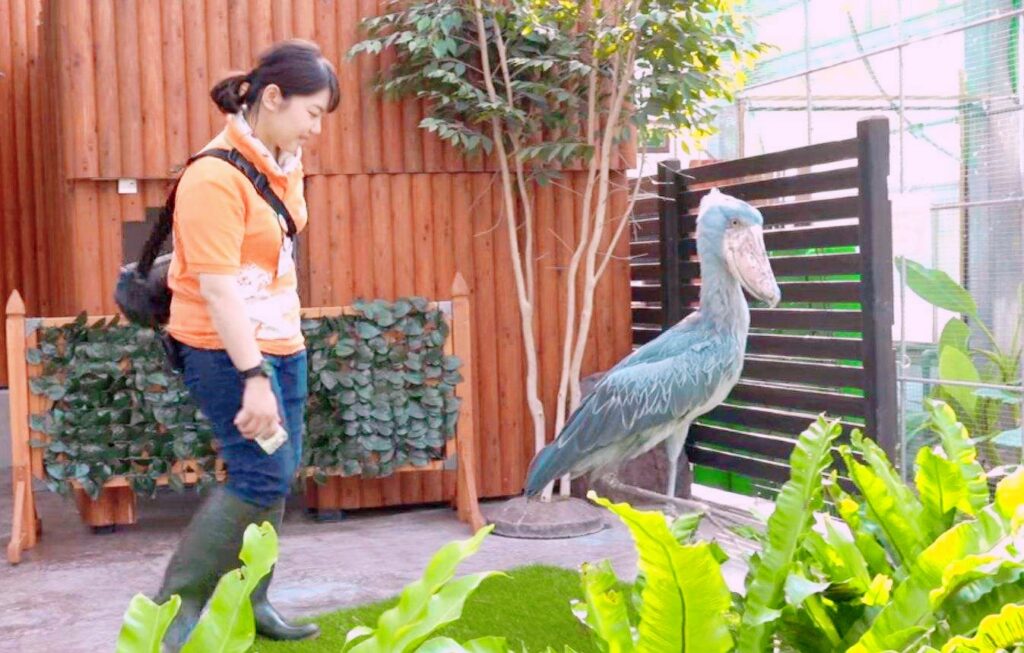
Various tactics are used in conservation efforts to protect the whale-headed stork. It is crucial to address the underlying causes of habitat deterioration first and foremost. Ensuring this amazing bird’s long-term existence requires putting sustainable land-use policies into place, safeguarding vital habitats, and reducing human intrusion into wildlife areas.
We need to step up our efforts to prevent pollution in addition to preserving ecosystems. Governmental agencies, environmental advocacy groups, and local communities working together can help create and implement strict environmental legislation. Two essential elements of this all-encompassing strategy are the reduction of contaminants in water bodies and the implementation of waste management systems.
Education campaigns are essential for raising public awareness and gaining support for the whale-headed stork’s protection. Increasing public knowledge of these species’ ecological significance, the dangers they confront, and the wider effects of biodiversity loss can spur action. Involving local communities in conservation initiatives creates a symbiotic relationship between ecological health and human well-being, while also empowering them as guardians of their natural heritage.
A legislative framework for conservation is largely dependent on actions taken to safeguard endangered species, such as the whale-headed stork. Animal protection laws act as a deterrent and lay the groundwork for a healthy coexistence of humans and animals by outlining precise criteria for habitat preservation, anti-poaching measures, and punishments for environmental infractions.
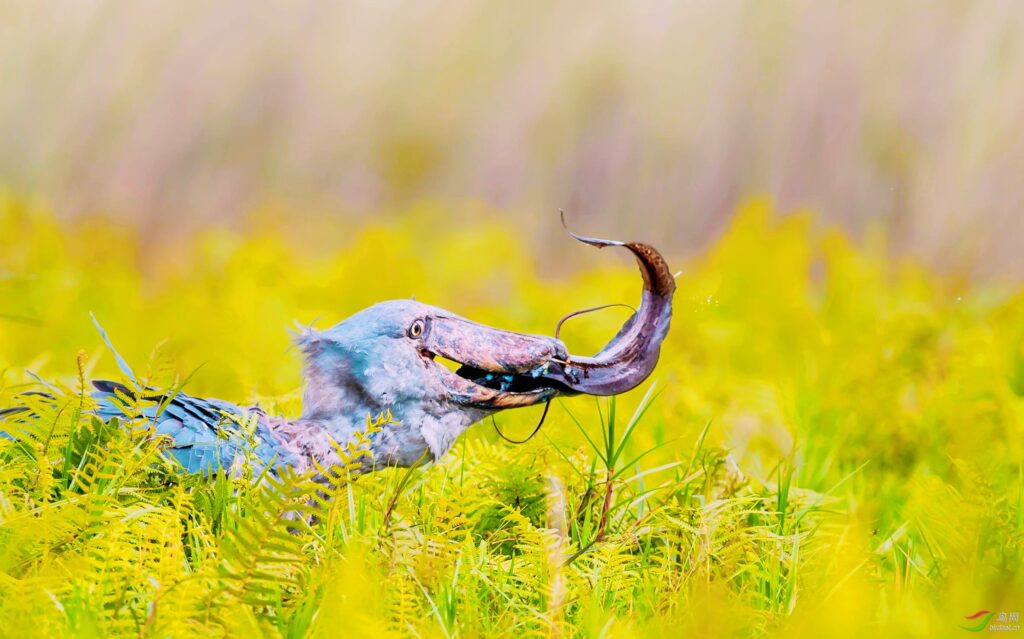
Addressing the transboundary issues the whale-headed stork faces requires international cooperation. Cross-border sharing of information, resources, and experience can improve conservation efforts and aid in the creation of winning plans. Coordinated conservation efforts, cooperative monitoring programs, and cooperative research projects can strengthen the effects of individual efforts and promote international cooperation to protect the planet’s biodiversity.
In conclusion, the whale-headed stork is a representation of Africa’s abundant biodiversity due to its enormous head and distinctive features. Because of its precarious place on the list of vulnerable animals, urgent and coordinated conservation measures are required. Humanity can be a key player in ensuring the survival of this amazing bird by tackling the underlying causes of habitat deterioration, preventing pollution, raising public awareness, passing protective legislation, and encouraging international cooperation. A painful call to action, the predicament of the whale-headed stork compels us to acknowledge our interdependence with the natural world and take proactive measures to protect the diversity that makes our planet unique.

